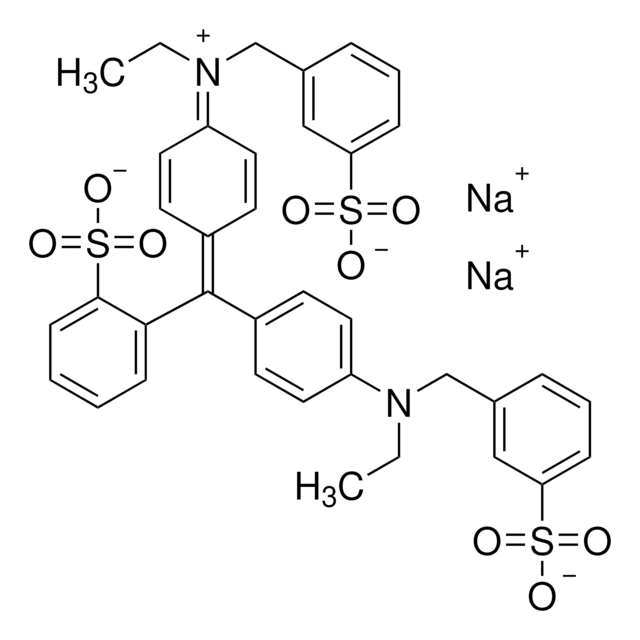34124
Deoxynivalenol -Lösung
100 μg/mL in acetonitrile, analytical standard
Synonym(e):
3α,7α,15-Trihydroxy-12,13-epoxytrichothec-9-en-8-on, DON, Vomitoxin
About This Item
Empfohlene Produkte
Qualität
analytical standard
Haltbarkeit
limited shelf life, expiry date on the label
Konzentration
100 μg/mL in acetonitrile
Methode(n)
HPLC: suitable
gas chromatography (GC): suitable
Anwendung(en)
cleaning products
cosmetics
food and beverages
personal care
Format
single component solution
Lagertemp.
−20°C
SMILES String
CC1=C[C@H]2O[C@@H]3[C@H](O)C[C@@](C)([C@]34CO4)[C@@]2(CO)[C@H](O)C1=O
InChI
1S/C15H20O6/c1-7-3-9-14(5-16,11(19)10(7)18)13(2)4-8(17)12(21-9)15(13)6-20-15/h3,8-9,11-12,16-17,19H,4-6H2,1-2H3/t8-,9-,11-,12-,13-,14-,15+/m1/s1
InChIKey
LINOMUASTDIRTM-QGRHZQQGSA-N
Suchen Sie nach ähnlichen Produkten? Aufrufen Leitfaden zum Produktvergleich
Allgemeine Beschreibung
Informieren Sie sich über unser gesamtes Sortiment an Mykotoxin-Referenzmaterialien vom Trichothecen-Typ
Anwendung
Signalwort
Danger
H-Sätze
Gefahreneinstufungen
Acute Tox. 4 Dermal - Acute Tox. 4 Inhalation - Acute Tox. 4 Oral - Eye Irrit. 2 - Flam. Liq. 2
Lagerklassenschlüssel
3 - Flammable liquids
WGK
WGK 2
Flammpunkt (°F)
35.6 °F - closed cup
Flammpunkt (°C)
2 °C - closed cup
Persönliche Schutzausrüstung
Eyeshields, Faceshields, Gloves, type ABEK (EN14387) respirator filter
Choose from one of the most recent versions:
Besitzen Sie dieses Produkt bereits?
In der Dokumentenbibliothek finden Sie die Dokumentation zu den Produkten, die Sie kürzlich erworben haben.
Kunden haben sich ebenfalls angesehen
Artikel
Supel Tox DON SPE cartridges required fewer process steps and fewer reagents than the IAC cleanup method for wheat matrix samples prior to HPLC analysis.
Supel Tox DON SPE cartridges required fewer process steps and fewer reagents than the IAC cleanup method for wheat matrix samples prior to HPLC analysis.
Unser Team von Wissenschaftlern verfügt über Erfahrung in allen Forschungsbereichen einschließlich Life Science, Materialwissenschaften, chemischer Synthese, Chromatographie, Analytik und vielen mehr..
Setzen Sie sich mit dem technischen Dienst in Verbindung.








